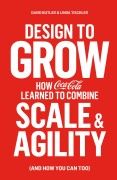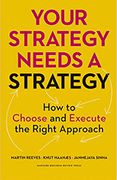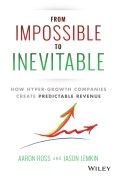
A 5 Minute Overview Of
Winning Now, Winning Later
How Companies Can Win in the Short Term While Investing for the Long Term
About the Author
David Cote was chairman and CEO of Honeywell for 16 years. During that time, the company's market capitalization grew from $20 billion to $120 billion. He now serves as executive chairman of Vertiv Holdings, a global data center products and services provider. He is a member of the Aspen Economic Strategy Group, and serves on the boards of the Council on Foreign Relations and the Conference of Montreal. He previously was appointed to the National Commission on Fiscal Responsibility and Reform. From 2013 to 2017, Barron's recognized David Cote as one of the world's best CEOs. He is a graduate of the University of New Hampshire.
The Main Idea
Many companies face what seems like a daunting paradox: Should you focus on making this quarter's numbers or prioritize longer-term strategies? The majority of corporate managers choose the first option, and hope for the best, but that approach brings its own set of problems.
The reality is short-term and long-term performance are not mutually exclusive. You can and must pursue both at the same time for your organization to excel. Short-term and long-term goals are more intertwined that you might assume at first glance.
When you take the right steps to improve operations now, you can use short-term results to validate you're on the right long-term path. To pull this off, you have to follow three guiding principles:

If our experience proves anything, it's that you don't have to be a genius to achieve remarkable short- and long-term performance (we certainly weren't). You also don't need to have some magic formula. What you do have to do is believe you can achieve two seemingly conflicting things at the same time — short-term performance and investment in the future. And then, on a daily operational level, you have to dedicate yourself to actually doing it, pushing yourself and others on your team and organization to go beyond what they think is possible, every small step of the way. Leadership matters — it really does. And the trick, as I like to say, is in the doing.
How to Win in the Short Term While Investing for the Long Term
Principle #1 — Get real about your business and accounting practices. To achieve strong short-term and long-term results at the same time, you first have to learn to think about your business in a more rigorous and demanding way. You learn how to do two conflicting things at the same time by injecting honesty and transparency into your financial controls. To have real conversations about your future, you have to address the elephants in the room, look squarely at how you can improve your processes, and end any cultural wars which are holding you back.
Principle #2 — Invest in the future, but not excessively. To grow, you're going to need to attract and retain great leaders — but not too many. You can then make investment decisions which will ensure your future growth and expansion. The best way to fund these is by keeping your fixed costs constant while you grow your company. That will dramatically improve your ability to perform over the short- and long-term. Go big on growth.
Principle #3 — Grow your business, but keep your fixed costs constant. It's vital that you retain both a short-term and a long-term approach in the challenging times which will inevitably arise in the years ahead. If you can think differently, and keep investing for the future, you can achieve explosive performance once things get back to normal. Your aim should be to help your team and your organization outperform over all time horizons.
Key Takeaways
- Should companies focus on making this quarter's numbers or prioritize longer-term strategies. You have to do both. There is incredible power when you work to achieve two seemingly conflicting things at the same time. It pushes you to go beyond what you think is possible, which is good.
- The very best way to fund future growth is to grow your business, but keep your fixed costs constant. If you think differently, and keep investing for the future, you can achieve explosive breakout performance.
If you're not pleasing customers today, any progress you make in other growth areas won't have much of an impact. If you want to grow, you have to plant seeds. So start planting!
Summaries.Com Editor's Comments
Fortune magazine said the biggest challenge facing corporate America is: "balancing the short-term success demanded by investors with sowing the seeds for rewards that will only be harvested years hence, but are essential to achieving greatness." Short-termism — where managers take actions to prop up quarterly earnings at the expense of making good long-term decisions — is rampant, and has caused companies to underperform, and some to go out of business.
In Winning Now, Winning Later, David Cote, the former CEO and chairman of Honeywell, makes the case that you can and should do both. Short-term and long-term performances are not mutually exclusive, and you need to pursue both simultaneously to excel over the long haul. One of his strategies that really stood out to me was that as you grow your business, you should be finding ways to keep your fixed costs constant. That's the perfect example of attempting to achieve two seemingly conflicting things at the same time, which is powerful and impressive.
I suspect David Cote knows what he's talking about. During the 16 years he served as CEO of Honeywell, the company's market capitalization grew from $20 billion to $120 billion — delivering returns of about 800%, two and a half times greater than the S&P 500. The ten principles he explains in this book set out how he achieved what he did.
I don't currently run a public company, but I know many of the CEOs of those companies use our business book summaries as learning resources for their teams. I'm confident the ideas captured in this book summary will be useful to them, and to managers of businesses of all sizes. In the words of David Cote: "Leadership matters — it really does. And the trick, as I like to say, is in the doing". Enjoy.
Want in-depth 30-minute summaries?
In addition to this 5-minute overview, Summaries.Com has a premium 30-minute summary of this book and 1,000+ more, to help you advance your career and business.
Check Out Summaries.com Premium Plans Today!Want more 5-minute Snapshots?
To get a new 5-minute business book snapshot each week, sign up for the Summaries.com free plan.
Sign Up for the Summaries.com Free PlanCompany Leadership 101 Collection
If you enjoyed this summary, here is a collection of related business book summaries, to help you get ideas and strategies that will give you an edge over your competition.
These summaries will give you ideas on how to be a better business manager.
Buy Company Leadership 101 Collection (5 x 30-Min Summaries)
Winning Now, Winning Later
How Companies Can Win in the Short Term While Investing for the Long Term
by David Cote

Design to Grow
How Coca-Cola Learned to Combine Scale & Agility (And How You Can Too)
by David Butler and Linda Tischler

Your Strategy Needs a Strategy
How to Choose and Execute the Right Approach
by Martin Reeves, Knut Haanaes and Janmejaya Sinha

From Impossible to Inevitable
How Hyper-Growth Companies Create Predictable Revenue
by Aaron Ross and Jason Lemkin

The Genius of Opposites
How Introverts and Extroverts Achieve Extraordinary Results Together
by Jennifer Kahnweiler